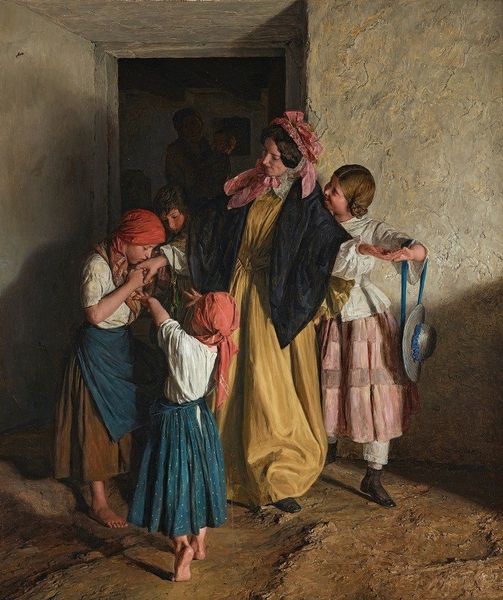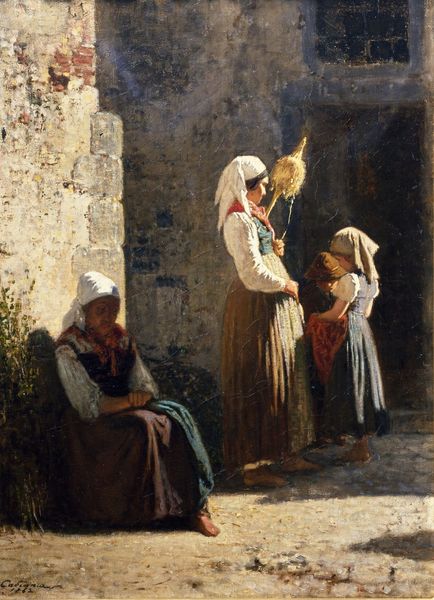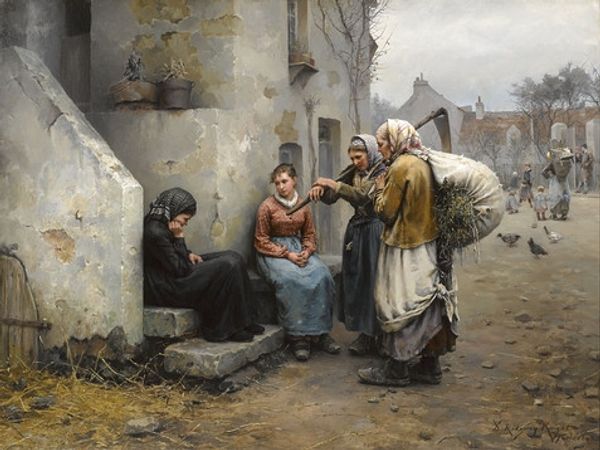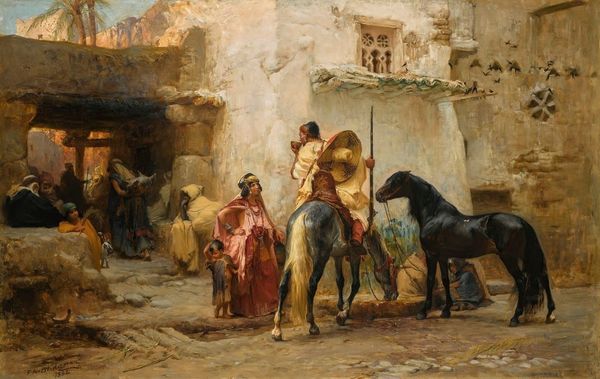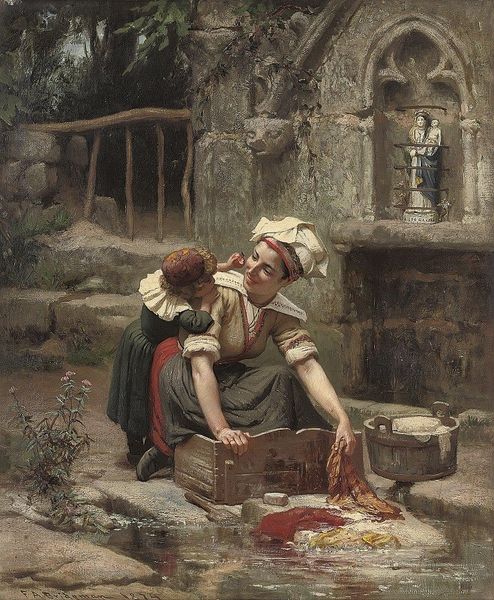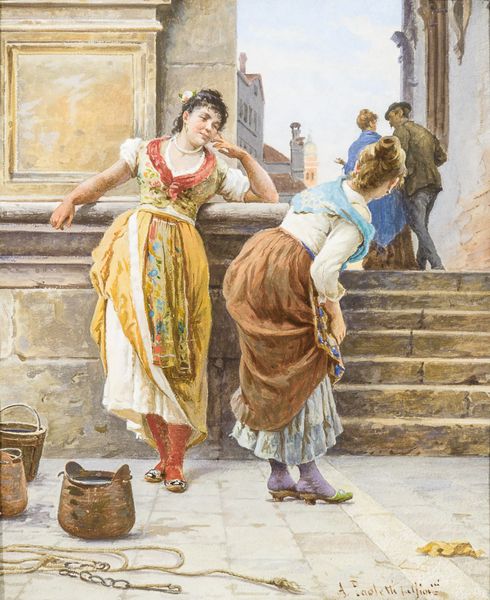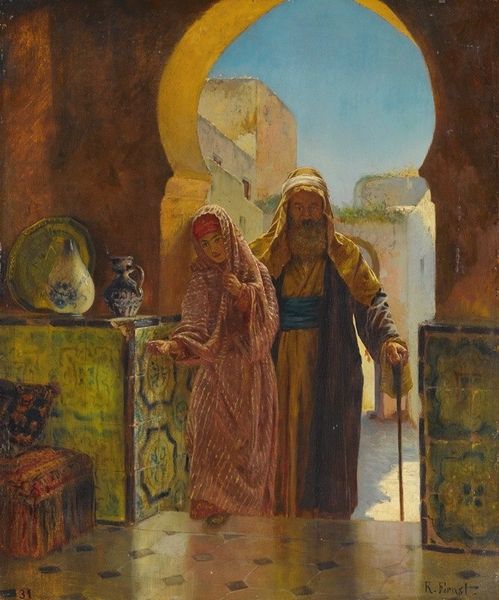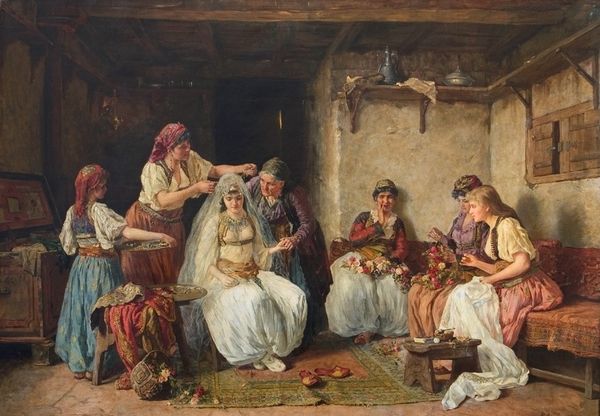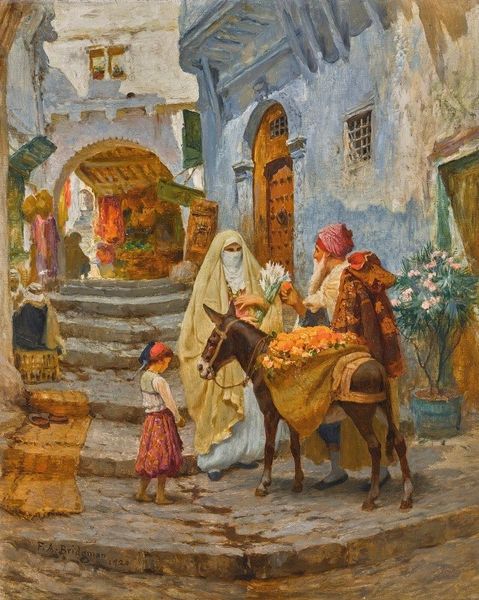
painting, oil-paint
#
portrait
#
figurative
#
narrative-art
#
painting
#
oil-paint
#
landscape
#
figuration
#
oil painting
#
orientalism
#
painterly
#
genre-painting
#
academic-art
#
realism
Copyright: Public Domain: Artvee
Editor: Here we have "The Sewing Lesson," an oil painting, likely from the late 19th century, by Frederick Arthur Bridgman. The scene feels intimate, a glimpse into a private world, but it also seems staged, somehow. What’s your interpretation? Curator: Well, that tension between the intimate and the performed is central to understanding Bridgman and orientalist painting in general. His works, while seemingly documentary, participated in a broader cultural project. How do you think this painting contributed to Western ideas about North Africa? Editor: I see it now. It's beautiful and exotic, but... the women are passive, almost ornamental. It reinforces a Western gaze. Was Bridgman’s work typical of Orientalism? Curator: In many ways, yes. The composition invites the viewer to observe a supposedly authentic moment. Yet, it’s carefully constructed. Think about how the light illuminates the seated woman, emphasizing her beauty and skill, while the doorway and child act as framing devices. What does this careful arrangement tell us about the intended audience? Editor: It makes the scene palatable, less "other." By emphasizing the domestic and familiar – the sewing, the lesson – it reduces the perceived threat of a different culture. Curator: Exactly. Bridgman catered to a market eager for exoticism tempered by familiar narratives. And we must also consider the power dynamics at play. These images shaped Western perceptions, often reinforcing colonial attitudes. Do you think museums today have a responsibility when showing works like this? Editor: Absolutely. Context is crucial. Ignoring the politics behind these images perpetuates harm. Understanding *why* these images were created, and for whom, is essential. Curator: Precisely. By examining the social and historical forces at play, we can unpack the complex layers of meaning embedded within even seemingly innocent genre scenes. I learned a lot in this session, by listening to your analysis and fresh insight. Thanks! Editor: This conversation really opened my eyes to the role art plays in shaping our understanding of different cultures and their position in society. I see Orientalism with new critical eyes now.
Comments
No comments
Be the first to comment and join the conversation on the ultimate creative platform.
